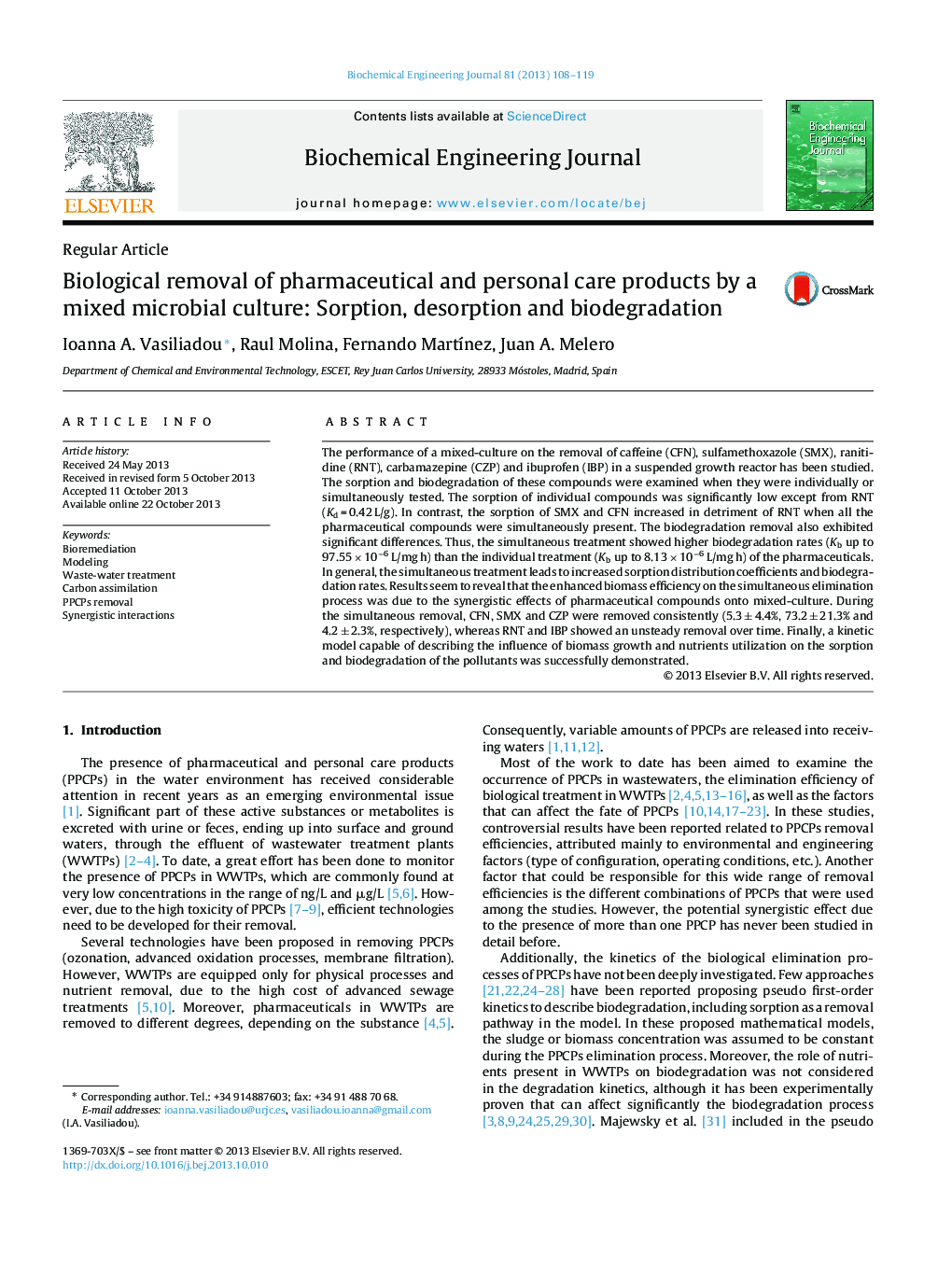| کد مقاله | کد نشریه | سال انتشار | مقاله انگلیسی | نسخه تمام متن |
|---|---|---|---|---|
| 3224 | 159 | 2013 | 12 صفحه PDF | دانلود رایگان |

• The potential of a mixed microbial culture to eliminate five PPCPs was studied.
• Sorption, desorption and biodegradation contribution was evaluated.
• The presence of more than one PPCP affected the sorption, desorption and biodegradation mechanism.
• The synergistic interactions of PPCPs can enhance the efficiency of the mixed-culture.
• A mathematical model was developed to describe the whole biological elimination process.
The performance of a mixed-culture on the removal of caffeine (CFN), sulfamethoxazole (SMX), ranitidine (RNT), carbamazepine (CZP) and ibuprofen (IBP) in a suspended growth reactor has been studied. The sorption and biodegradation of these compounds were examined when they were individually or simultaneously tested. The sorption of individual compounds was significantly low except from RNT (Kd = 0.42 L/g). In contrast, the sorption of SMX and CFN increased in detriment of RNT when all the pharmaceutical compounds were simultaneously present. The biodegradation removal also exhibited significant differences. Thus, the simultaneous treatment showed higher biodegradation rates (Kb up to 97.55 × 10−6 L/mg h) than the individual treatment (Kb up to 8.13 × 10−6 L/mg h) of the pharmaceuticals. In general, the simultaneous treatment leads to increased sorption distribution coefficients and biodegradation rates. Results seem to reveal that the enhanced biomass efficiency on the simultaneous elimination process was due to the synergistic effects of pharmaceutical compounds onto mixed-culture. During the simultaneous removal, CFN, SMX and CZP were removed consistently (5.3 ± 4.4%, 73.2 ± 21.3% and 4.2 ± 2.3%, respectively), whereas RNT and IBP showed an unsteady removal over time. Finally, a kinetic model capable of describing the influence of biomass growth and nutrients utilization on the sorption and biodegradation of the pollutants was successfully demonstrated.
Figure optionsDownload as PowerPoint slide
Journal: Biochemical Engineering Journal - Volume 81, 15 December 2013, Pages 108–119